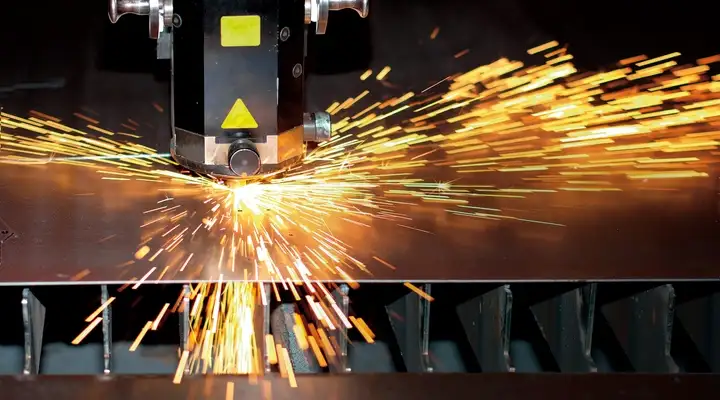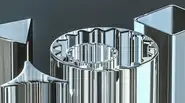
Precise cuts
A spark of inspiration
An invisible beam cuts through a metal rod as if it were only butter. Sparks fly and seconds later a piece of the rod falls to the ground. The magical beam originates from a glass tube inside a laser-cutting machine. Therein, excited particles in a gain medium, such as carbon dioxide (CO2) gas, emit photons that are reflected back and forth by mirrors. One of the mirrors is semi-transparent, and the particles eventually escape as a high-energy beam that can travel almost indefinitely. But the beam of light can also be put to great use in manufacturing. If it is focused into a tight spot, the beam can even vaporize solid steel. The aforementioned glass tube is also called a ’resonator.’ It is the source of the laser and a central component of every laser-cutting machine. It is also the specialty product from the China-based company RECI. ”We are focused on the production, research and development, and sale of CO2 lasers. Today, we are the largest producer of CO2 lasers in the world,” says RECI’s general manager, Lu Chundi. CO2 lasers have particularly high efficiency and are regularly used in industry for cutting and welding. ”RECI’s CO2 lasers are mainly used for non-metal cutting and carving in leather and other fabrics,” explains Chundi. And although these applications do not require the same beam intensity as in cutting metal, all components must be of the highest quality.
The importance of straight tubing
One attribute of the glass tubes that make up the resonators chamber is particularly important: its straightness. ”A laser beam represents a perfectly straight line. To avoid interference, the container it is traveling through must also be as straight as possible,” explains Marko Yang, Sales Account Manager with SCHOTT in Shanghai. The problem is, the longer the glass tube, the greater its curvature. Standard resonator tubes have a length of one and a half meters. ”So, although the deviation from a straight line is only on the scale of a few single millimeters, it can lead to malfunctioning of the machines if not handled correctly in tubes of this size,” adds Yang.
Why DURAN®?
This is precisely why SCHOTT’s DURAN® tubes remain the first choice for RECI. ”Their quality is good and reliable, and the tight tolerances we require remain stable over time,” says RECI’s General Manager, Chundi. And this preference for SCHOTT tubes remains true although there are several cheaper competitors on the Chinese market: ”Despite the price per kilogram for DURAN® being higher than local Chinese tubing, the total costs for producing the glass laser tubes are lower with our products,” explains Yang. This is because local products make it necessary to rework the straightness of the tubing in a very extensive and, thus, cost-intensive way.
To strengthen their market advantage, RECI recently commenced with production of its third generation of lasers. It has several advantages compared to previous models: ”fewer defects, higher stability and a longer lifetime,” summarizes Chundi. This and other developments in the laser industry paint a very promising picture of the future. SCHOTT’s Sales Account Manager, Marko Yang, also agrees: ”Lasers have come a long way and are constantly improving. SCHOTT will always be a part of this development, and we hope to contribute with our own innovations along the way.”




